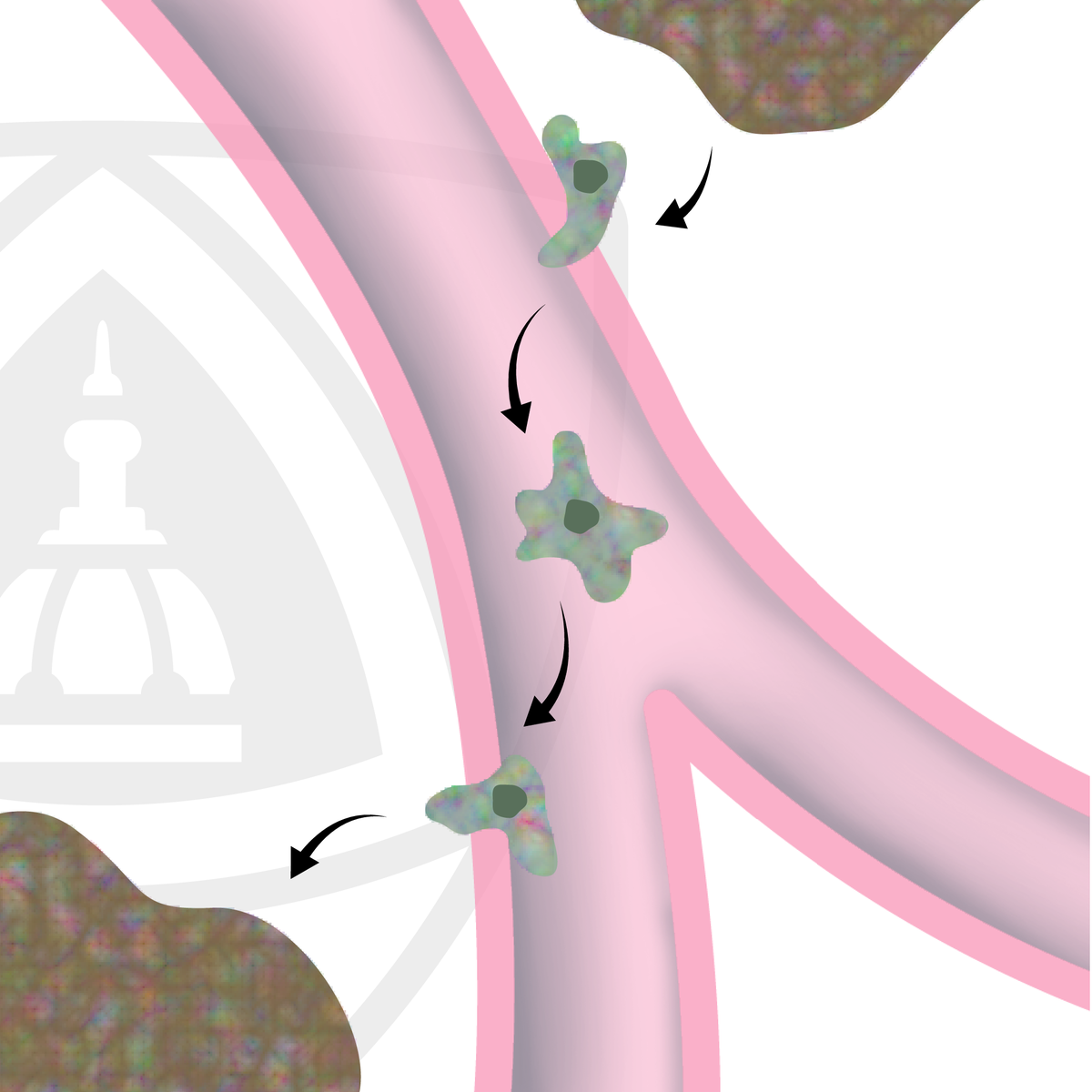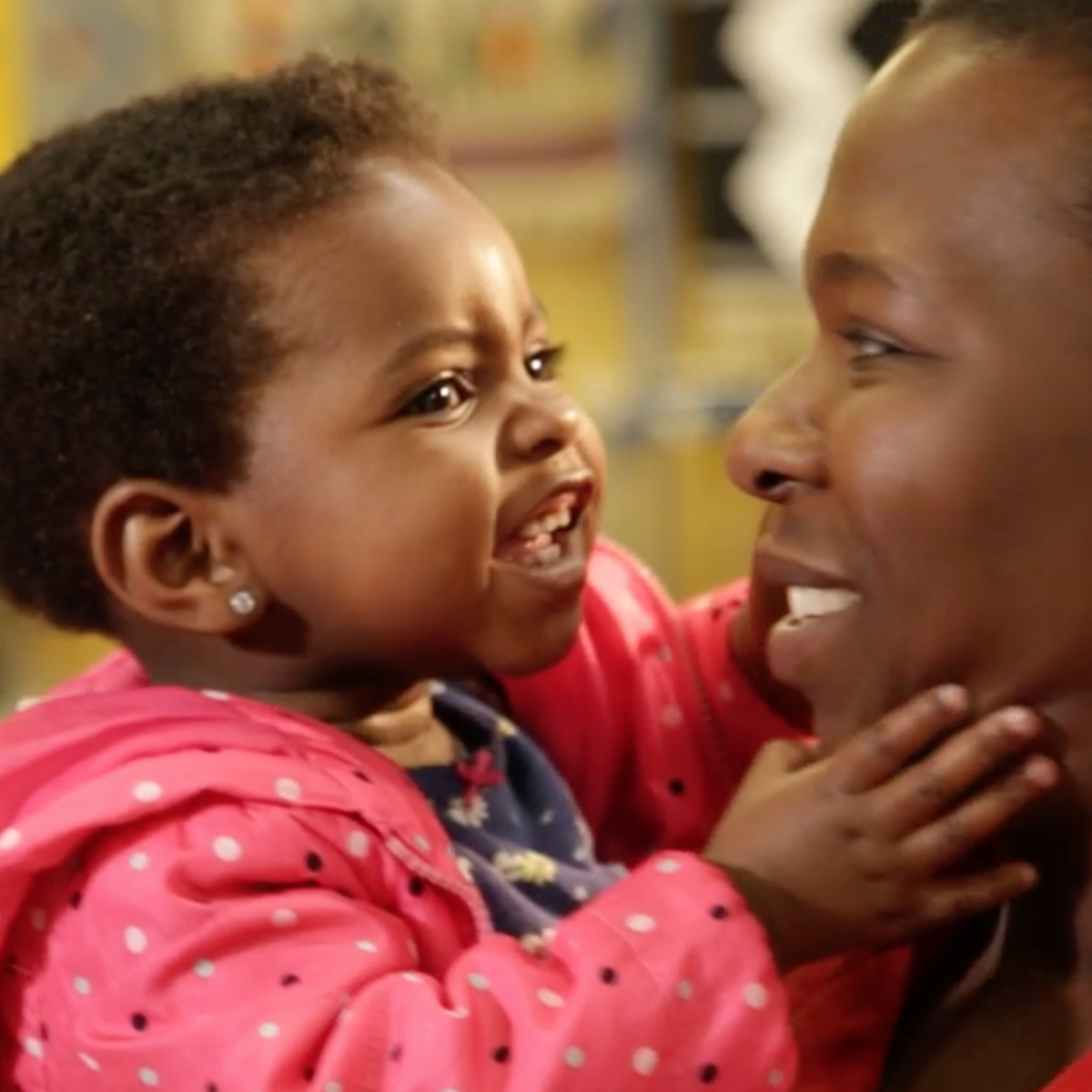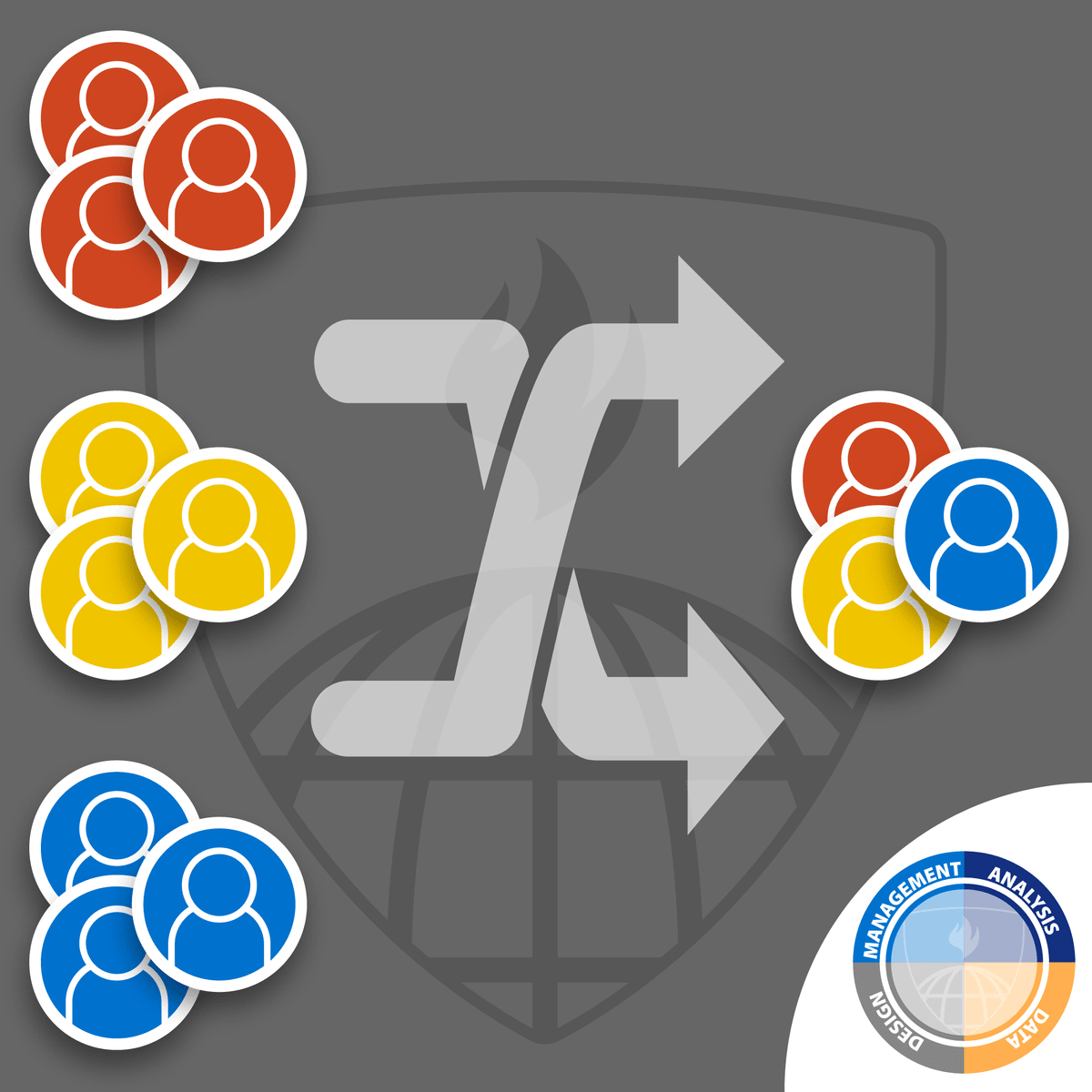Back to Courses









Life Sciences Courses - Page 33
Showing results 321-330 of 644

PrEParing: PrEP for Providers and Patients
Pre-Exposure Prophylaxis (PrEP) using the antiretroviral medication emtricitibine/tenofovir approved in countries around the world is a highly effective means of reducing transmission of HIV through sexual encounters and needle sharing.
This Johns Hopkins University course PrEPares you with essential information, concepts and practical advice regarding PrEP from leaders in the field. A first of its kind learning opportunity, both providers and patients learn from the same experts through content that meets the needs of both audiences, while facilitating the opportunity for a shared community space.
Lessons for healthcare workers provide background on foundational and cutting-edge research and PrEP guidelines, how to initiate a PrEP program, clinical management and providing culturally sensitive sexual health and primary care to diverse communities.
Lessons for PrEP enthusiasts, PrEP users or the PrEP curious provide information regarding who can benefit from PrEP, how to access services, what to expect and how to stick with your PrEP program long-term.
OBJECTIVES:
At the conclusion of the session, the participant will be able to:
1. Describe the differences between foundational PrEP studies and demonstration projects
2. Describe the basic pharmacodynamics of tenofovir/emtricitibine including mechanism of infection prevention and time
to protective concentration in mucosal tissues
3. List recommendations from PrEP for Prevention of HIV Infection in the United States clinical practice guidelines, USPHS
and CDC, including initial and ongoing screening and testing
4. Describe the need for PrEP as an HIV prevention tool for priority in often stigmatized populations
5. Indicate the components for integrating PrEP services into clinical practice
6. Outline guidelines for screening and treatment of sexually transmitted infections
7. Describe how to take a thorough sexual history and to engage with clients around sex in an affirming and non-
judgmental manner
8. List the baseline and follow-up laboratory monitoring required
9. Explain key aspects of patient education for HIV prevention and sexual health
10. Describe protocols for ongoing PrEP services and when to discontinue
FACULTY/ CREDENTIALS:
Jason E. Farley, PhD, MPH, ANP-BC, FAAN, Associate Professor
Johns Hopkins University School of Nursing
Chris Beyrer, MD, MPH, Professor
Johns Hopkins University Bloomberg School of Public Health
Yusuf Ariyibi, BA, Disease Intervention Specialist
Baltimore City Health Department
Joyce Jones, MD, MS, Clinical Associate
Johns Hopkins University School of Medicine
Neha Sheth Pandit, PharmD, AAHIVP, BCPS, Associate Professor
University of Maryland School of Pharmacy
Pierre-Cedric Crouch, PhD, ANP-BC, ACRN, Director of Nursing
San Francisco AIDS Foundation
Renata Arrington Sanders, MD, Assistant Professor
Johns Hopkins University School of Medicine
Jenell Coleman, MD, MPH, Associate Professor
Johns Hopkins University School of Medicine
Michele Decker, ScD, MPH, Associate Professor
Johns Hopkins University Bloomberg School of Public Health
Deborah Dunn, PA-C, MBA, Physician Assistant
Chase Brexton Health Care
Jordan White, MS, Desmond Tutu Fellow of Public Health and Human Rights
Johns Hopkins University Bloomberg School of Public Health
Gregory Lucas, MD, PhD, Professor
Johns Hopkins University School of Medicine
Demetre Daskalakis, MD, MPH, Acting Deputy Commissioner, Division of Disease Control, NYC Dept. of Health and Mental Hygiene
David Dowdy, MD, PhD, Associate Professor
Johns Hopkins University Bloomberg School of Public Health
Jessica LaRicci, PrEP Coordinator
Johns Hopkins University School of Nursing
Susan Tuddenham, MD, MPH, Assistant Professor
Johns Hopkins University School of Medicine
Joseph Cofrancesco, MD, MPH, FACP, Associate Professor of Medicine
Johns Hopkins University School of Medicine
Jill Crank, CRNP, MSN/MPH, Nurse Practitioner
Evergreen Healthcare
Paul Sacamano, MPH, ANP-BC, ACRN, PrEP Project Lead
Johns Hopkins University School of Nursing
Shima Ge, BS, PrEP Peer Navigator
Johns Hopkins University School of Nursing
ORIGINATION DATE October 02, 2017
RENEWAL DATE: November 30, 2019
EXPIRATION DATE: November 30, 2021
URL: https://www.coursera.org/learn/prep/
HARDWARE/SOFTWARE: Computer Hardware; Internet connection; Browser
MATERIALS: None
TARGET AUDIENCE: physicians, physician assistants, nurse practitioners, registered nurses, pharmacists, health education specialists, public health workers, social workers, case managers
PREREQUISITES: None
FORMAT: These seminars are enduring video presentations with online discussion forum and resources.
CONTACT INFORMATION: Office of The REACH Initiative, Johns Hopkins University School of Nursing (888) 788-7737
ACCREDITATION STATEMENTS:
CME activities with Joint Providers: This activity has been planned and implemented in accordance with the Essential Areas and policies of the Accreditation Council for Continuing Medical Education through the joint providership of the Centers for Disease Control and Prevention and Johns Hopkins University School of Nursing. The Centers for Disease Control and Prevention is accredited by the (ACCME®) to provide medical education for physicians. Physicians should claim only the credit commensurate with the extent of their participation in the activity.
The Centers for Disease Control and Prevention designates this enduring material for a maximum of 10.75 AMA PRA Category 1 Credits™.
CEU: The Centers for Disease Control and Prevention is authorized by IACET to offer 1.1 CEU's for this program.
CECH: Sponsored by the Centers for Disease Control and Prevention, a designated provider of continuing education contact hours (CECH) in health education by the National Commission for Health Education Credentialing, Inc. This program is designated for Certified Health Education Specialists (CHES) and/or Master Certified Health Education Specialists (MCHES) to receive up to 10.5 total Category I continuing education contact hours. Maximum advanced level continuing education contact hours available are 0. CDC provider number 98614.
CPE: The Centers for Disease Control and Prevention is accredited by the Accreditation Council for Pharmacy Education as a provider of continuing pharmacy education.
This program is a designated event for pharmacists to receive 1.05 CEUs in pharmacy education. The Universal Activity Number is 0387-9999-19-191-H01-P.
Category: This activity has been designated as Knowledge-Based.
Once credit is claimed, an unofficial statement of credit is immediately available on TCEOnline. Official credit will be uploaded within 60 days on the NABP/CPE Monitor.
For Certified Public Health Professionals (CPH)
The Centers for Disease Control and Prevention is a pre-approved provider of Certified in Public Health (CPH) recertification credits and is authorized to offer 11 CPH recertification credits for this program.
DISCLOSURE: In compliance with continuing education requirements, all presenters must disclose any financial or other associations with the manufacturers of commercial products, suppliers of commercial services, or commercial supporters as well as any use of unlabeled product(s) or product(s) under investigational use.
CDC, our planners, our content experts and their spouses/partners wish to disclose they have no financial interests or other relationships with the manufacturers of commercial products, suppliers of commercial services, or commercial supporters with the exception of Dr. Jason Farley and he wishes to disclose that he received grant from Gilead. Planning committee discussed conflict of interest with Dr. Farley to ensure there is no bias.
Content will not include any discussion of the unlabeled use of a product or a product under investigational use with the exception of Dr. Arrington Sander’s discussion of PrEP for adolescents, PrEP is not approved for adolescents < 18 years old; and Dr. Tuddenham’s discussion of STI screening, she will be discussing extra genital screening with NAAT currently recommended by CDC.
CDC did not accept commercial support for this continuing education activity.
Instructions for Obtaining Continuing Education (CE)
In order to receive continuing education (CE) for WD2928- PrEParing: PrEP for Providers and Patients please visit TCEO and follow these 9 Simple Steps before 11/30/2021
Complete the activity
Complete the Evaluation at https://tceols.cdc.gov/
Pass the posttest at 80% at https://tceols.cdc.gov/
Email son-reachinititiative@jhu.edu once the above is cpmpleted for CE
FEES: No fees are charged for CDC’s CE activities.

Visualizing the Living Body: Diagnostic Imaging
This course teaches learners the underlying principles behind conventional radiography, computerized axial tomography (CT), magnetic resonance imaging (MRI), and ultrasound. The radiology of chest, abdomen, pelvis, extremities, spine and brain are taught in this course using a combination of lectures and extensive practical activities and assessments.
By the end of the course you will be able to:
Describe the principles of conventional radiography, CT MRI and ultrasound
Describe systematic approaches to imaging interpretation
Describe the use of windowing in CT
Describe sequences in MRI and their relevance.
This course is part 4/4 in the Yale Human Anatomy Specialization.
Topics covered in the lectures include: Introductions to conventional radiography, computerized tomography (CT), ultrasound, magnetic resonance imaging (MRI), chest radiology, CT of chest, chest radiology: introduction to pathology, normal CT anatomy of the abdomen, renal anatomy, colon cancer, renal neoplasm, normal pelvic imaging, normal male pelvis imaging, normal female pelvis imaging, radiology of the upper extremities, radiology of the lower extremities, musculoskeletal imaging modalities, introduction to spine radiographs, skull radiography, brain CT imaging fundamentals, brain CT imaging pathology, brain: magnetic resonance imaging (MRI), and brain MRI pathology

Mindfulness and Well-being: Peace in, Peace Out
The purpose of this course is to introduce mindfulness as a robust tool for spiritual development. Highlighting its rich traditional roots, the course explores the capacity of mindfulness to expand understanding about the nature of human consciousness and facilitate certain transcendent emotional experiences, including awe, wonder and flow. Designed for practical application, the course includes a variety of meditations, reflective exercises and activities to help make the material personally meaningful and is the culmination of a specialization created to promote holistic well-being through the practice of mindfulness.

COVID-19 - A clinical update
As an expert in infectious diseases, editor of the Journal of Infectious Diseases and author of the textbook Infectious Diseases: A clinical short course, McGraw-Hill April 2020, I have been concerned about the misinformation being shared about the COVID-19 epidemic. How did this disease develop? Where did it come from? How does it cause diseases? The answers to these questions will be answered in the first video of module 1. The world has been startled and frightened by the rapid spread of this virus throughout the world. In Video 2 the epidemiology as presently understood is reviewed. This video will be periodically updated recognizing the rapid progression of the pandemic. Many want to know how does this disease present, what are the symptoms associated with COVID-19? How dangerous is COVID-19? Who is at risk of dying? All these questions are answered in Video 3. And finally how is this disease best treated and how can we slow the spread of the infection? These questions are answered in video 4. In addition to the videos multiple choice questions are included to test your understanding and there is an epidemiology peer reviewed exercise designed to teach you how this infection is spread and to show the power of the tracing of cases and isolating those who are infected. The second peer review exercise will encourage you to create a campaign to shift your countries culture to embrace behaviors that can lead to suppression of the epidemic, behaviors that will save lives. After completing this course you will be armed with the knowledge and skills to make a difference and help to bend the curve.

History of Racial Inequity in Healthcare
The first course of the Addressing Racial Health Inequity in Healthcare specialization will first situate the role of public health in healthcare, and walk through important concepts and definitions that you will see throughout the course and subsequent courses. You will walk through the social and biological perspectives on the concepts of race and racism, and unpack the history of unequal treatment in the U.S. You will learn about the health insurance system in the U.S., differential access to care, and professional challenges to diversity in healthcare. And finally, you will explore examples of resilience in healthcare that were critical to preserving the health of marginalized populations.
Understanding Cancer Metastasis
Over 500,000 people in the United States and over 8 million people worldwide are dying from cancer every year. As people live longer, the incidence of cancer is rising worldwide, and the disease is expected to strike over 20 million people annually by 2030.
Everyone has been, or will be touched by cancer in some way during their lifetime. Thanks to years of dedication and commitment to research we’ve made enormous advances in the prevention and treatment of cancer, But there is still a lot of work to be done.
In this course, physicians and scientists at the Johns Hopkins School of Medicine explain how cancer spreads or metastasizes. We’ll describe the major theories of metastasis and then describe the biology behind the steps in metastasis. The course also describes the major organs targeted by metastasis and describes how metastases harm the patient.

Providing Social, Emotional, Behavioral, and Special Education Services in School
Welcome to our the third course in the School Health specialization: Providing Social, Emotional, Behavioral, and Special Education Services in School. In this course, you will learn about how social-emotional skills, mental health, and learning are related. We will focus on how schools can support social-emotional learning and promote mental health for all students.
We will walk through the reasons that schools should promote student mental health. Next, we’ll review school wide activities to support skill development and prevent social, emotional, and behavioral challenges. Then, we’ll identify strategies for students at risk of developing problems. Finally, we’ll highlight interventions that can be used for students who have significant mental health needs. We will emphasize the ways that schools think about mental health problems and provide services for students with disabilities, which is different than in medical or mental health settings.
As part of the course, we will introduce two students to help all of this information come alive. Prepare yourself to learn about an essential piece of student wellness—social-emotional health.

Stanford's Short Course on Breastfeeding
Stanford's Short Course on Breastfeeding was designed for new mothers and the people who support them. This engaging, one-week learning experience, provides participants with everything they need to know to more successfully establish breastfeeding – or support a new mother who has decided to breastfeed. We created the course because we recognize that there is a very small window in which successful, exclusive breastfeeding can be established, and that many new mothers are mastering this skill during a busy and sometimes stressful time. Brought to life by beautiful illustrations and interviews with international mothers, we hope to reach the broadest spectrum of mothers, helping them understand the current recommendations, challenges, benefits and practical considerations around breastfeeding - while simultaneously inspiring them to consider breastfeeding as the first choice for feeding their babies.
And now for the legal stuff...
Disclaimer of Warranty and Limitation of Liability
THE INFORMATION IN THIS COURSE IS PROVIDED "AS IS" WITHOUT ANY REPRESENTATION, OR WARRANTIES, EXPRESS OR IMPLIED. DIGITAL MEDIC AND STANFORD MEDICINE ARE NOT LIABLE FOR ANY TYPE OF LOSS OR INJURY, OR ANY DAMAGES WHETHER DIRECT OR INDIRECT, ARISING FROM USE OF THIS COURSE. This course is not a substitute for the advice, diagnosis or treatment by an appropriately qualified and licensed physician or other health care provider.
Copyright 2018 Stanford University.
The course videos must be used according to the term of our Creative Commons License available at https://creativecommons.org/licenses/by-nc-nd/4.0/: free distribution with attribution, no commercial use, no derivatives.

The exposome: cracking the science about what makes us sick
What are the causes of disease? We know that most diseases result from a combination of genes and environment (nature and nurture). Our genes alone do not determine our fate. For most complex diseases, externalities - environmental factors in the broad sense - are more important. This includes our living and working environments, diet, social support and stress, pollution, and exposure to infectious agents. Exposome research is about discovering the non-genetic drivers of health and disease.
Derived from the term exposure, the Exposome represents the totality of exposures we face throughout our lifetime. It also represents the biological responses that arise from external exposures.
In this course, 7 researchers from Utrecht University and/or the NWO Gravitation programme Exposome-NL will offer their expertise. We will introduce you to the Exposome concept; why it’s important; how we measure the exposome; and the data sciences steps needed to establish associations with health outcomes. This course will conclude with reflections on what is needed to advance this nascent and transformative field of research.
Exposome research requires transdisciplinary approaches. Therefore, this MOOC will be of interest to current and prospective students and researchers in the fields of public health, environmental health, life sciences, clinical medicine, geosciences, humanities, and social and behavioural sciences.
Design and Conduct of Clinical Trials
In this course, you’ll learn how to design and carry out clinical trials. Each design choice has implications for the quality and validity of your results. This course provides you and your team with essential skills to evaluate options, make good design choices, and implement them within your trial. You’ll learn to control for bias, randomize participants, mask treatments and outcomes, identify errors, develop and test hypotheses, and define appropriate outcomes. Finally, a trial without participants is no trial at all, so you’ll learn the guiding principles and develop the essential skills to ethically and conscientiously recruit, obtain consent from, and retain trial participants.
Popular Internships and Jobs by Categories
Find Jobs & Internships
Browse
© 2024 BoostGrad | All rights reserved